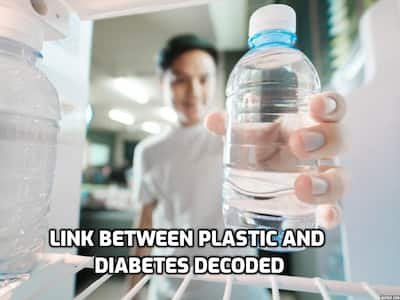
On this World Environment Day, know how the use of plastic products can affect your hormones and up your risk of diabetes.
The theme for this year’s World Environment Day 2023 is solutions to #BeatPlasticPollution. It aims to spread awareness around actions necessary to curb plastic pollution. There are many implications of plastic usage, including their impact on human health. Plastics contain endocrine-disrupting chemicals (EDCs) – substances that can interfere with the normal functioning of the endocrine system. The endocrine system is accountable for hormone production and regulation in our body. Exposure to EDCs can lead to various health issues, including diabetes.
Diabetes is a human energy crisis disorder with serious health complications. While several factors contribute to diabetes, there is growing evidence suggesting a potential link between exposure to certain EDCs and the development of diabetes.
Link between plastics and diabetes
Studies have indicated that certain EDCs, such as bisphenol A (BPA), phthalates, and organochlorine pesticides[1], may lead to an increased risk of developing diabetes. These chemicals can exist in plastics, food packaging and even personal care products.
- EDCs can mimic or block the actions of hormones.
- It can alter hormone production.
- It can interfere with hormone signaling pathways.
- This may affect glucose metabolism and insulin regulation.
- In addition, EDCs may also influence pancreatic beta cells, which are responsible for producing and releasing insulin.
- Additional studies have shown that exposure to certain EDCs can impair beta cell function and viability[2].
- This can reduce the production and secretion of insulin, further contributing to the development of diabetes.
EDCs and Diabetes Risk in Indians
South Asians, including Indians, are six times more likely to have type 2 diabetes[3] than the rest of the general population. We also tend to neglect appropriate diabetes management, putting us at a higher risk of health problems. While this risk is due to a combination of genetics and lifestyle choices, there are certain environmental exposures such as pollution and industrial chemicals containing EDCs that also contribute to the danger of developing diabetes in Indians.
It is important to note that while there is evidence suggesting a link between EDCs and diabetes, we are still investigating the exact mechanisms. Diabetes is a complex disease with multiple factors (genetics, lifestyle, environment) influencing its development. EDCs are just one of many potential contributors to diabetes, and we need to study more to fully understand their role in the disease.
READ RELATED: Work From Home And Mental Health: Employees May Experience Higher Rate Of Psychological Problems
Minimizing EDC Exposure: Individual Actions
While investigations continue, there is no harm in making conscious choices to avoid exposure to EDCs. While shopping, we recommend minimizing the use of products containing known EDCs, such as BPA and phthalates. For example, choosing glass or stainless-steel containers for food and beverages, applying natural personal care products, and opting for organic foods can help reduce EDC exposure.
Raising Awareness and Advocating for Change
The issue of EDCs is a concern for everyone. The entire healthcare industry should come together to raise awareness amongst the public as well as policymakers. We need stricter regulations on the use of EDCs and promoting safer alternatives. This Environment Day, we want to take the opportunity to highlight the potential health risks associated with endocrine-disrupting chemicals (EDCs), including their connection to diabetes. India faces a serious threat of diabetes with almost 77 million Indians already living with this chronic condition. It is only by raising awareness, promoting research, and taking collective actions can we build a healthy future for all of us.
Reference:
[1] Environmental neglect: endocrine disruptors as underappreciated but potentially modifiable diabetes risk factors | NIH
[2] Developmental Exposure to Endocrine Disrupting Chemicals and Type 1 Diabetes Mellitus | NIH
[3] Diabetes in South Asians | Diabetes.co.uk
(This article is authored by Dr Navneet Agrawal, Chief Clinical Officer, BeatO)
Total Wellness is now just a click away.
Follow us on
window.addEventListener(‘load’, (event) => {
// $(document).ready(function(){
$(‘#commentbtn’).on(“click”,function(){
(function(d, s, id) { var js, fjs = d.getElementsByTagName(s)[0]; if (d.getElementById(id)) return; js = d.createElement(s); js.id = id; js.src = “//connect.facebook.net/en_US/sdk.js#xfbml=1&version=v2.3”; fjs.parentNode.insertBefore(js, fjs);}(document, ‘script’, ‘facebook-jssdk’));
$(“.cmntbox”).toggle();
});
// });
});









